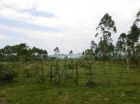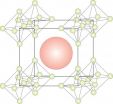(Press-News.org) Case Western Reserve University dental researchers have found a less invasive way to extract single rare immune cells from the mouth to study how the mouth's natural defenses ward off infection and inflammation.
By isolating some specialized immune cells (white blood cells known as "leukocytes") to study how they fight diseases in the mouth—or reject foreign tissues, such as in failed organ transplants—researchers hope to learn more about treating and preventing such health issues as oral cancers, cardiovascular disease, AIDS and other infectious diseases.
To this point, researchers have had to rely on studying and growing immune cells from blood. Studying tissue immune cells allows researchers to learn how they function at the site of infection.
The role of adaptive immune cells in the stomach and intestines is more widely known, yet the role of similar cells in the mouth is unclear. There are no reliable methods to extract immune cells from mouth, which are more accessible and easier to extract than harder-to-reach tissues in the stomach and intestines.
But, until now, immune cells removed from the mouth couldn't be isolated with enough viability or grown to study their activities, Pushpa Pandiyan, assistant professor of biological sciences at the dental school, explained.
The new method, developed by Pandiyan, the study's lead author, is described in Biological Procedures article, "Isolation of T cells from mouse oral tissues."
Pandiyan, who studies oral diseases associated with HIV, found no reliable method existed to isolate and keep a single cell from the tongue, gums and palate alive long enough to study.
Pandiyan and her team developed a way to do so successfully. The researchers reported that more than 94 percent of the isolated cells lived long enough to study.
Their method
Using mouse models, the researchers isolated two important specialized immune T lymphocytes that play a role in fighting oral diseases. The cells are part of the adaptive immune system in which cells respond to pathogens invading the body.
The researchers took tissue samples from the mouths of mice and washed them several times in saline and chemical solutions with antibiotics. This was followed by disintegrating the tissue using salts and enzymes. The solution was centrifuged and strained to separate different tissue parts with more washings and separations before the cells could be studied and grown.
Pandiyan, who received an early career travel award from the American Association of Immunologists (AAI) will present her findings at the organization's annual meeting, May 2-7, in Pittsburgh.
Natarajan Bhaskaran, Yifan Zhang and Aaron Weinberg, from Case Western Reserve University's Department of Biological Sciences, contributed to the study, which was funded by the university's dental school.
INFORMATION:
To view the complete article, visit http://www.biologicalproceduresonline.com/content/16/1/4.
New method isolates immune cells for researchers to study how they ward off oral diseases
2014-04-15
ELSE PRESS RELEASES FROM THIS DATE:
Study: Deforestation could intensify climate change in Congo Basin by half
2014-04-15
By 2050, deforestation could cause temperatures in the Congo Basin to increase by 0.7 °C. The increase would intensify warming caused by greenhouse gases by half, according to a study by researchers at the University of Leuven, Belgium.
Explosive population growth and inefficient agricultural practices are causing large-scale destruction of tropical rainforests in Central Africa. A team of researchers from the University of Leuven examined how these practices will affect longer-term temperatures in the region. Using a sophisticated computer model, they forecasted Congo ...
Saturn's rings reveal how to make a moon
2014-04-15
Disturbances in the icy rings of Saturn have given scientists an insight into how moons are made.
Writing in the journal Icarus this week, Professor Carl Murray from Queen Mary's Astronomy Unit reports that recently discovered disturbances at the very edge of Saturn's outer bright A ring result from a small icy object that formed within the ring and which may be in the process of migrating out of it. They have nicknamed the object, 'Peggy'.
"We hadn't seen anything like this before," explained Professor Murray. "We may be looking at the act of birth, where this object ...
A screening process for early identification of infants at risk of autism
2014-04-15
The aim of this study was to develop a screening tool to identify infants prior to 12 months at risk for autism spectrum disorder (ASD) and developmental learning delay (DLD) and provide immediate determination of risk for autism spectrum disorder. The importance of early detection and treatment for children with ASD has been well documented. Since 2006, the American Academy of Pediatrics has recommended routine screening measures for toddlers at risk for ASD at 18 and 24 months of age, however the authors of this study were not aware of any screening questionnaires available ...
Researchers help Boston Marathon organizers plan for 2014 race
2014-04-15
After experiencing a tragic and truncated end to the 2013 Boston Marathon, race organizers were faced not only with grief but with hundreds of administrative decisions, including plans for the 2014 race – an event beloved by Bostonians and people around the world.
One of the issues they faced was what to do about the nearly 6,000 runners who were unable to complete the 2013 race. The Boston Athletic Association, the event's organizers, quickly pledged to provide official finish times for these runners. Thinking ahead, they also had to consider how to provide these runners ...
Bizarre parasite may provide cuttlefish clues
2014-04-15
University of Adelaide research into parasites of cuttlefish, squid and octopus has uncovered details of the parasites' astonishing life cycles, and shown how they may help in investigating populations of their hosts.
Researcher Dr Sarah Catalano has described 10 new parasite species− dicyemid mesozoans −, which live in the kidneys of cephalopods (cuttlefish, squid and octopus). They are the very first dicyemid species to be described from Australian waters.
"Although dicyemid parasites have been studied by other groups, nothing has been known about dicyemid ...
In child custody disputes, LGBT parents face bias in the courts, new Drexel review finds
2014-04-15
Court decisions that favor a heterosexual parent over a gay or lesbian parent in a custody dispute often do not consider important social science research on parenting by gay and lesbian individuals, according to a new review from Drexel University.
Previous research shows that gay and lesbian individuals are as effective in parenting as heterosexuals, and that children raised by gay or lesbian parents are as well-adjusted as their peers raised by heterosexual parents. This research could greatly impact how legislatures and courts make decisions regarding custody for ...
Engineers develop new materials for hydrogen storage
2014-04-15
Engineers at the University of California, San Diego, have created new ceramic materials that could be used to store hydrogen safely and efficiently.
The researchers have created for the first time compounds made from mixtures of calcium hexaboride, strontium and barium hexaboride. They also have demonstrated that the compounds could be manufactured using a simple, low-cost manufacturing method known as combustion synthesis.
The work is at the proof of concept stage and is part of a $1.2 million project funded by the National Science Foundation, a collaboration between ...
Eating rice boosts diet quality, reduces body weight and improves markers for health
2014-04-15
ARLINGTON VA, April 15, 2014 – New research, partially funded by the U.S. Department of Agriculture and the USA Rice Federation, shows that consumers can improve their diets simply by enjoying white or brown rice as part of their daily meals.
In a study published online in the peer-reviewed journal Food and Nutrition Sciences, lead author Theresa Nicklas, DrPH, of Baylor College of Medicine, analyzed the National Health and Nutrition Examination Survey datasets from 2005-2010 and evaluated the association of rice consumption with overall diet quality and key nutrient ...
Whooping cough bacterium evolves in Australia
2014-04-15
The bacterium that causes whooping cough, Bordetella pertussis, has changed in Australia - most likely in response to the vaccine used to prevent the disease - with a possible reduced effectiveness of the vaccine as a result, a new study shows.
A UNSW-led team of researchers analysed strains of Bordetella pertussis from across Australia and found that many strains no longer produce a key surface protein called pertactin.
About 80 per cent of the 2012 whooping cough cases in Australia studied by the team were caused by pertactin-free strains.
Pertactin is one of the ...
Outcome of stroke worse for people with infection
2014-04-15
Infection is bad news for all of us - but it can be really serious to people who have had a stroke. Evidence is mounting that infection makes things much worse after a stroke.
A team of scientists at the University of Manchester has now found a key to why and how infection is such a bad thing for stroke sufferers
In the research published today in the medical journal Annals of Neurology, the researchers show that rodents with pneumonia fared worse after having a stroke than those without the bacterial infection.
When people get an infection their natural defences ...



